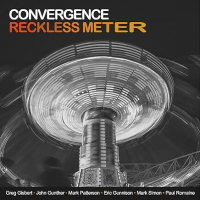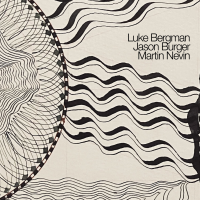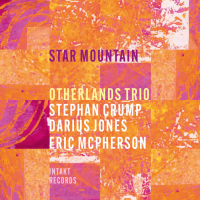Home » Jazz Articles » Multiple Reviews » Bill Evans / Chet Baker / Sonny Stitt: Cold Case Investi...
Bill Evans / Chet Baker / Sonny Stitt: Cold Case Investigations Strike Gold

Each musician goes out of his way to say how enjoyable it was to work with Evans, testifying to his supportive approach, and clearly they mean it. In his relentless pursuit of musical perfection, Evans retained his humanity. Lovely music, lovely man.
Evans' Treasures: Solo, Trio & Orchestra Recordings From Denmark 1965-1969 is being released on 2-CD and 3-LP; Baker's Blue Room: The 1979 VARA Studio Sessions In Holland on 2-CD and 2-LP; Stitt's Boppin' In Baltimore: Live At The Left Bank on 2-CD and 2-LP. As always, Feldman seems to have put as much thought into the liner booklets as he has into curating the music itself; the booklets include interviews with surviving musicians and essays about those who have passed.
 Bill Evans
Bill Evans Treasures
Elemental
2023
Received wisdom holds that Bill Evans' 1959-61 trio with bassist Scott LaFaro and drummer Paul Motian scaled heights that no later lineup approached. And yes, the Evans/LaFaro/Motian trio was special. But at least two of Evans' subsequent bass and drums partnerships were also stellar. Bassist Marc Johnson and drummer Joe LaBarbera, with whom Evans was collaborating when he passed in 1980, touched on the sublime, but were cut off before they were able to fully bed in. And an earlier trio, with bassist Eddie Gomez and drummer Marty Morell—the group featured on much of Treasures: Solo, Trio & Orchestra Recordings From Denmark 1965-1969—was extraordinary, too, in particular for the symbiotic relationship between Evans and Gomez, who worked with Evans from1966 to 1977.
The 30 tracks are a mixture of solo, trio and orchestral recordings made in or around Copenhagen in 1965, 1966 and 1969. In most cases they were well recorded by public service radio and TV. The material is a mix of jazz standards and soon-to-be-standards written by Evans (see Track Listing below), plus some surprises among the orchestral tracks. The trio recordings, which are in the majority, feature bassists Gomez and Niels-Henning Orsted Pedersen, and drummers Morell, Alan Dawson, and Alex Riel.
Trumpeter and arranger Palle Mikkelborg's 27-minute orchestral suite, Waltz For Debby, is an important discovery, recorded in 1969 by Evans, Gomez and Morrell with The Royal Danish Symphony Orchestra and The Danish Radio Big Band. The suite was broadcast once only on Danish TV and no other recording of it exists. It includes two treatments of Evans' "Waltz For Debby," the first ruminative, with the symphony orchestra, the second faster, with the big band in full swing. In between come Evans' "Time Remembered" and "My Bells" and Mikkelborg's specially composed "Treasures," a showcase for his own, muted trumpet. The suite concludes with Evans' "Walkin' Up."
The Waltz For Debby suite is not quite as ambitious as Mikkelborg's work on Miles Davis' final orchestral album, Aura (CBS), which took up an entire double LP when first released in 1989, but it is no slouch and is hugely enjoyable. "After the first run-through in the studio," writes Mikkelborg in the liner booklet, "I turned to see [Evans'] reaction and he gave me a lovely smile; something never to forget."
The liner booklet includes illuminating interviews with Gomez, Morrell and Riel. Each musician goes out of his way to say how enjoyable it was to work with Evans, testifying to his supportive approach and generosity of spirit, and clearly they mean it. In his relentless pursuit of musical perfection, Evans seems always to have retained his humanity.
This also comes through in the 45-minute YouTube film below, which has Evans and Gomez rehearsing Riel for a TV special in Copenhagen in 1966. Evans' quiet confidence is a masterclass in how to coax the best out of the nervous young Dane. "Don't put yourself into any tension about [remembering] any of those things because I'd rather have you miss them and be relaxed," Evans says at one point, to Riel's evident relief.
Lovely music, lovely man. One always feels better for listening to Evans.
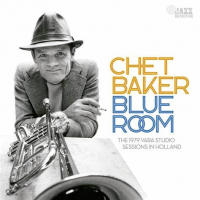 Chet Baker
Chet Baker Blue Room
Jazz Detective / Elemental
2023
Unearthing the April and November 1979 studio recordings which comprise this outstanding album is amongst the Jazz Detective team's most impressive pieces of sleuthing to date. Recorded in the VARA studio in Hilversum for broadcast on Dutch radio, the tapes subsequently lay forgotten until now. Their existence even escaped Matthew Ruddick's exhaustive 830-page biography, Funny Valentine: The Story Of Chet Baker (Melrose, 2012), which practically tells the reader which side of bed Baker got out of each day. Two of the protagonists, pianist Phil Markowitz and bassist Jean-Louis Rassinfosse, interviewed by Ruddick about the spring 1979 European tour during which the bulk of the album was recorded, make no mention of visiting VARA studios or the tapes' subsequent radio broadcast (if indeed one was actually made). Neither does Ruddick's estimable book make any mention of Edwin Rutten, who produced both sessions with such marvellous effect. Nor are the three musicians who completed the lineup which recorded the November session mentioned by Ruddick at any point.
Fortunately for us, Feldman's sleuthing associate Frank Jochemsen, of Nederlands Jazz Archief, found the tapes, in pristine condition, tucked away in the vault of station KRO-NCRV. Baker is leading two quartets. The one from April is with Markowitz, Rassinfosse and drummer Charles Rice, and its seven, mostly long-form tracks make up all of the first disc and half of the second. The four, shorter November tracks are with pianist Frans Elsen, bassist Victor Kaihatu and drummer Eric Ineke.
Baker is in great form on the April tracks but, Rutten writes in the liner booklet, was not feeling well (for which read, was in need of a fix) during the November session. He also, says Rutten, did not see eye to eye with Elsen, whom he had not met before. The April session was the polar opposite, with everything in alignment. Rassinfosse is a gloriously lyrical player and Rice an ideally unobtrusive one. Markowitz had worked with Baker throughout 1978 and was the pianist on two excellent albums made that year, Broken Wing (Sonopresse, 1979) and Live At Nick's (Criss Cross, 1987). In his interview, he says that he consciously restrained the edge that he later evinced during his years of collaboration with Dave Liebman. By April 1979, Markowitz and Baker had formed a strong musical bond.
Sound quality on both discs is excellent—warm and full of presence—and Rutten, who went on to become a successful actor and host on children's TV programmes in The Netherlands, deserves a shout-out. Little remembered as a producer, he also worked with Bob Brookmeyer, Clark Terry, Kenny Wheeler and Martial Solal, among others.
The material is Baker's usual mix of show tunes and jazz standards (two by Miles Davis, one each by Wayne Shorter and Phil Urso), plus his own "Blue Gilles." Track playing times from the April session average around ten minutes, allowing for extended solos from Baker, Markowitz and, occasionally, Rassinfosse. Baker, not a lover of drum solos, gives Rice three choruses on Davis' "Down" and adds brief vocals to "Oh You Crazy Moon."
Sometimes it is possible to feel a chilling undertone, a dread presence, in Baker's music, even, perhaps especially, when he is at his most sumptuous. As the trombonist and writer Mike Zwerin observed in an essay on Baker in Close Enough For Jazz (Quartet, 1983), "Chet Baker is summertime, but the livin' isn't easy." None of that is apparent on Blue Room. Even on the four November tracks, the vibe, rather miraculously, is good.
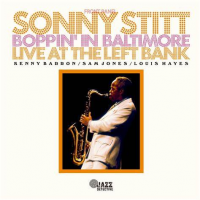 Sonny Stitt
Sonny Stitt Boppin' In Baltimore
Jazz Detective / Elemental
2023
In a 2020 interview for AAJ, tenor saxophonist Idris Ackamoor, who emerged on the US scene in the mid 1970s, described the non-competitive, community-orientated attitude that was then gaining ground among his generation of African American jazz musicians, in contrast to the mindset of earlier generations.
"[Previously, jazz musicians] were raised like crabs in a bucket," said Ackamoor. "From the 1920s onwards, they were brought up on the idea of the cutting school, where you'd try and best each other in head-to-head jam sessions. 'I'm badder than this cat, I'm badder than that cat.' But my generation felt that the priority had to be unification. Competitive cutting was opposed to unity. It was opposed to 'each one teach one' as the saying went. There was a race war going on in the US. We needed to present a united front."
A generation older than Ackamoor, Sonny Stitt personified the culture of competitive cutting. Stitt operated like an old time Western gunslinger, crossing the country playing with pick-up bands and looking to take down every other horn player he encountered.
In the Conclusion of his autobiography, Straight Life (Schirmer Books, 1979), Art Pepper, of the same generation as Stitt, recalls an occasion when Stitt asked if he could sit in. "He took the first solo," wrote Pepper. "He played, I don't know, about forty choruses. He played for an hour maybe, did everything that could be done on a saxophone... Then he stopped... Gave me one of those looks. 'All right, suckah, your turn.'" Pepper rose to occasion. "I played way over my head... I blew and I blew, and when I finally finished I was shaking all over... and the people were screaming... and I looked at Sonny, but I just kind of nodded, and he went, 'All right.'" Pepper finishes the story, and the book, "That's what it's all about."
Boppin' In Baltimore was recorded at a gig at Baltimore's Famous Ballroom in 1973. It is a pick-up band but not a jam session. Stitt is fronting a quartet with pianist Kenny Barron, bassist Sam Jones and drummer Louis Hayes, and there is no second horn. Well, actually, there is, briefly, although liner note scribe Bob Blumenthal does not mention it. A second saxophonist can be heard on the opening and concluding theme statements of a furiously paced version of "Stella By Starlight." Wisely, perhaps, the person concerned does not attempt a solo.
On four tracks, Stitt plays alto, and on the other four, all of them blues, he plays tenor. At times the primal intensity of his tenor straddles the line between jazz and honking and screaming R&B. On the alto, he is more boppish. And on both instruments he is incandescent. I am here, he seems to be saying, to shave your ass.
Sound quality is good, as in good enough. The rudimentary recording set-up favoured Stitt—which is appropriate as he is centrestage practically all the time—and the other players are backgrounded. Barron is in strong form and his solos are clear enough, but he tends to get lost behind Stitt.
Stitt's gun-for-hire modus operandi comes through tellingly towards the end of the second disc, when he name checks the musicians. He cannot, among the hundreds of piano players he has shared the bandstand with, remember Barron's name. He has to ask him who he is before repeating it for the audience. "I remember faces, not names," he says.
Tracks and Personnel
TreasuresTracks: Come Rain Or Come Shine; Someday My Prince Will Come; Beautiful Love; I Should Care; Very Early; Time Remembered; Who Can I Turn To?; Waltz For Debby; Intro; Waltz For Debby; Time Remembered; My Bells; Treasures; Waltz For Debby (Reprise); Walkin' Up; Re: Person I Knew; 'Round Midnight; My Funny Valentine; Time Remembered; Come Rain Or Come Shine; Epilogue; Elsa; Stella By Starlight; Detour Ahead; In A Sentimental Mood; Time Remembered; Nardis; Autumn Leaves; Emily; Quiet Now; Nardis.
Collective Personnel: Bill Evans: piano; Niels-Henning Orsted Pedersen: bass; Alan Dawson: drums; Alex Riel: drums; Eddie Gomez: bass; Marty Morell: drums; Palle Mikkelborg: trumpet; Allan Botshinsky: trumpet; Idrees Sulieman: trumpet; Torolf Molgaard: trombone; Jesper Thilo: reeds; Sahib Shihab: reeds; unidentified orchestra musicians.
Blue Room
Tracks: Beautiful Black Eyes; Oh You Crazy Moon; The Best Thing For You; Blue Room; Down; Blue Gilles; Nardis; Candy; Luscious; My Ideal; Old Devil Moon.
Collective Personnel: Chet Baker: trumpet, vocals; Phil Markowitz: piano; Jean-Louis Rassinfosse: bass; Charles Rice: drums; Frans Elsen: piano; Victor Kaihatu: bass; Eric Ineke: drums.
Boppin' In Baltimore
Tracks: Baltimore Blues; Star Eyes; Lover Man (Oh Where Can You Be?); They Can't Take That Away From Me; A Different Blues; Stella By Starlight; Deuces Wild; The Theme.
Personnel: Sonny Stitt: alto and tenor saxophone; Kenny Barron: piano; Sam Jones: bass; Louis Hayes: drums.
Tags
PREVIOUS / NEXT
Support All About Jazz
 All About Jazz has been a pillar of jazz since 1995, championing it as an art form and, more importantly, supporting the musicians who make it. Our enduring commitment has made "AAJ" one of the most culturally important websites of its kind, read by hundreds of thousands of fans, musicians and industry figures every month.
All About Jazz has been a pillar of jazz since 1995, championing it as an art form and, more importantly, supporting the musicians who make it. Our enduring commitment has made "AAJ" one of the most culturally important websites of its kind, read by hundreds of thousands of fans, musicians and industry figures every month.









